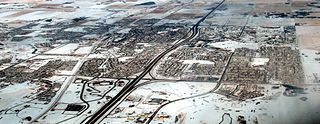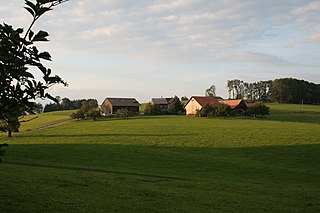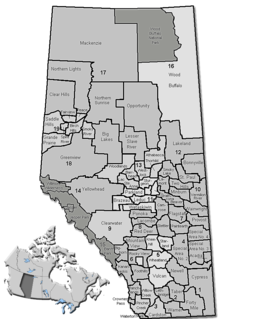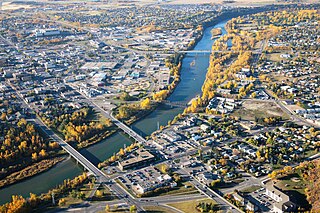| ||
 Distribution of Alberta's 269 urban municipalities | ||
Alberta has provincial legislation allowing its municipalities to conduct municipal censuses between April 1 and June 30 inclusive. [1] [2] Due to the concurrency of Statistics Canada conducting the Canada 2016 Census in May 2016, the Government of Alberta offered municipalities the option to alter their 2016 municipal census timeframes to either March 1 through May 31 or May 1 through July 31. [3] Municipalities choose to conduct their own censuses for multiple reasons such as: to better inform municipal service planning and provision; to capitalize on per capita based grant funding from higher levels of government; or to simply update their populations since the last federal census. [4]

Alberta is a western province of Canada. With an estimated population of 4,067,175 as of 2016 census, it is Canada's fourth most populous province and the most populous of Canada's three prairie provinces. Its area is about 660,000 square kilometres (250,000 sq mi). Alberta and its neighbour Saskatchewan were districts of the Northwest Territories until they were established as provinces on September 1, 1905. The premier has been Rachel Notley since May 2015.
Four provinces and territories in Canada have legislation that allow municipalities to conduct a municipal census. These include the provinces of Alberta and Saskatchewan and the territories of Nunavut and Yukon. Of these four provinces and territories, municipalities in Alberta were the only ones that exercise the option to conduct a municipal census as of 2006.
Statistics Canada, formed in 1971, is the Government of Canada government agency commissioned with producing statistics to help better understand Canada, its population, resources, economy, society, and culture. Its headquarters is in Ottawa. The Minister responsible for Statistics Canada is the Minister of Innovation, Science and Economic Development, currently Navdeep Bains.
Contents
- Municipal census results
- Breakdowns
- Hamlets
- Shadow population counts
- Notes
- See also
- References
- External links
With the dissolution of the villages of Galahad and Strome on January 1, 2016, Alberta had 354 municipalities in 2016. [5] Alberta Municipal Affairs recognized those conducted by 21 (5.9%) of these municipalities. [6] By municipal status, it recognized those conducted by 11 of Alberta's 18 cities, 5 of 108 towns, 2 of 90 villages, and 3 of 64 municipal districts. [6] [lower-alpha 1] In addition to those recognized by Municipal Affairs, a census was planned by the Village of Forestburg for 2016 but was subsequently deferred to 2017. [7]

Galahad is a hamlet in east-central Alberta, Canada within Flagstaff County. It is located just a few miles north of the Battle River valley on a former Canadian National rail line. The hamlet was originally incorporated as a village on May 5, 1918. It dissolved to become a hamlet under the jurisdiction of Flagstaff County on January 1, 2016.

Strome is a hamlet in east-central Alberta, Canada within Flagstaff County. It is located on Highway 13, approximately 58 km (36 mi) east of the City of Camrose. The hamlet was originally incorporated as a village on February 3, 1910. It dissolved to become a hamlet under the jurisdiction of Flagstaff County on January 1, 2016. Strome's name is believed to come from Stromeferry in Ross & Cromarty, Scotland.
Events from the year 2016 in Canada.
Some municipalities achieved population milestones as a result of their 2016 censuses. Airdrie became the eighth city in Alberta to exceed 60,000 residents, while Leduc surpassed 30,000 people and Cochrane grew beyond the 25,000 mark. Edmonton fell short of the 900,000-mark by 553 people, while Red Deer dipped back below 100,000 residents after surpassing that milestone in 2015.

Airdrie is a city in Alberta, Canada within the Calgary Region. It is located north of Calgary within the Calgary–Edmonton Corridor at the intersection of Queen Elizabeth II Highway and Highway 567.

Leduc is a city in the province of Alberta, Canada. It is 33 kilometres (21 mi) south of the provincial capital of Edmonton and is part of the Edmonton Metropolitan Region.

Cochrane is a town in the Canadian province of Alberta. The town is located 18 km (11 mi) west of the Calgary city limits along Highway 1A. With a population of 26,320 in 2017, Cochrane is the second largest town in Alberta and one of the fastest growing communities in Canada. It is part of Calgary's census metropolitan area and a member community of the Calgary Regional Partnership (CRP). The town is surrounded by Rocky View County.








